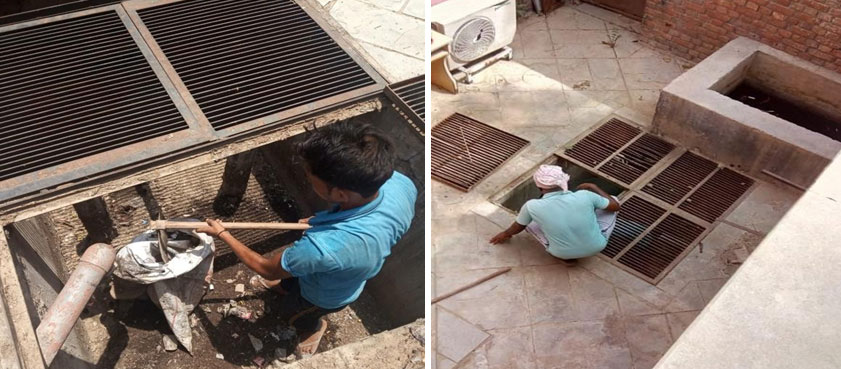Rainwater Harvesting Structure and Utilization in the Campus
Amity University Haryana's commitment to rainwater harvesting as a vital component of its water management strategy is commendable. Relying on rainwater as the primary source for groundwater recharge in a semi-arid region is both environmentally conscious and sustainable.
The concept of utilizing the natural watershed contour to plan and implement rainwater harvesting infrastructure is a strategic approach. By doing so, the university is maximizing its capacity to capture and store rainwater efficiently.
The deployment of a complex network of rainwater harvesting wells across the campus shows a holistic understanding of the local environment and a proactive step towards self-sufficiency in water resources. It not only helps in replenishing the groundwater but also reduces the dependency on external water sources.
Such a system not only conserves water but also contributes to the sustainability of the campus and the surrounding ecosystem. It's a model that other institutions or communities in similar geographical settings could potentially adopt to address water scarcity challenges.
The Rainwater Harvesting facility consists of an elaborate network of rainwater harvesting wells spread all over the Campus.
- Number of Wells/Pits: 43
- No of Bores: 112 (2 to 3 Bores per well)
It's important to have a well-maintained network to ensure their effectiveness:
- Routine Cleaning: To maintain the effectiveness of these rainwater harvesting wells, routine cleaning is essential. Over time, debris, sediment, and contaminants can accumulate in the wells, which may reduce their efficiency in collecting and storing rainwater. Regular cleaning helps ensure that the wells can continue to function effectively.
- Proper Operation and Maintenance: Proper operation and maintenance of the rainwater harvesting system are crucial. This includes not only cleaning but also regular inspections to ensure that the collection and distribution systems are in good working order. If any components are damaged or not functioning correctly, they should be repaired or replaced as needed.
- Monitoring and Water Quality: It's also important to monitor the water quality, especially if the harvested rainwater is intended for uses like irrigation or even for drinking water. Regular water quality testing can help ensure that the water remains safe for its intended purposes.
- Education and Awareness: Promoting awareness and education about rainwater harvesting and its benefits is important. Campus members should be informed about the system's purpose, operation, and how they can contribute to its effectiveness by conserving water and not polluting the system.
- Environmental Impact: Rainwater harvesting can have a positive impact on the environment by reducing the demand on traditional water sources and helping recharge groundwater. This can be particularly important in areas with water scarcity or seasonal water availability.
Overall, rainwater harvesting is an eco-friendly and sustainable practice that can benefit both our campus and the environment. Regular maintenance and effective management are key to ensuring its long-term success.
MAINTENANCE OF WATER HARVESTING STRUCTURE BEFORE RAINY SEASON

© 2021 Amity University Gurugram. All Rights Reserved.
